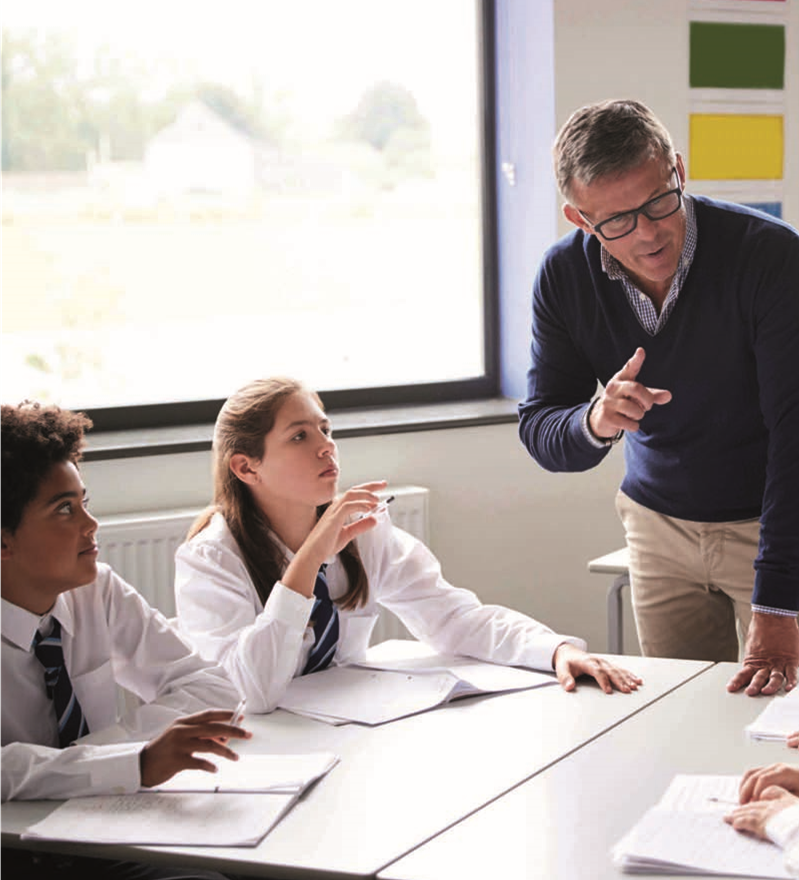Erik Boyter, CEO, WindowMaster, explains how improving the air quality in schools can increase pupil productivity and wellbeing.

Before Covid-19, the benefits of fresh air and a comfortable environment in schools were clear. From greater student progress in classrooms with opening, as opposed to fixed, windows to a 65% reduction in Sick Building Syndrome (SBB) when using natural or mixed mode ventilation, there is strong reason to ensure our learning spaces have the best indoor air quality (IAQ) possible.
It’s now more important than ever. Students have returned to the classroom, where they spend the most time outside their homes, and parents and guardians want reassurance they’re in a safe, healthy environment.
It’s well established that good ventilation plays a key role in minimising the risk of aerosol transmission of disease. Fortunately, modern natural ventilation systems offer intelligent control to maintain a comfortable classroom throughout the year with a flow of high quality, fresh air. Traditionally viewed as simply opening and closing windows, these smart systems automatically supply the appropriate amount of ventilation without the need for manual adjustment. The benefits are many, extending beyond user well-being to the wider environment.
Picture yourself in an overly warm, stuffy room with 25 other people. Now imagine trying to maintain focus for an hour. Even for an adult, it’s a challenge. Better IAQ offers an affordable and realistic solution.
Compared to solutions that recirculate air, natural ventilation sees a decrease in occurrences of concentration problems, nasal congestion, fatigue, headaches and more. Further, student performance on numerical and language-based tasks can improve as a result of reducing indoor temperature by just a few degrees. The impact on students and staff alike is significant.
From an environmental perspective, smart passive ventilation reduces reliance on carbon-intensive mechanical ventilation systems, decreasing a building’s operational emissions. When appropriately designed and controlled, it harnesses the potential of natural elements, such as wind and thermal buoyancy, to regulate the indoor environment. This means less maintenance and significantly lowered utilities bills.
Hybrid systems, combining natural and mechanical ventilation, present educational facilities with another option to meet site specific needs while still standing to reap the sustainable benefits; a hybrid approach can prove to be even more efficient than a purely natural solution.
A key component in reducing emissions, and in supporting the UK’s drive to Net Zero 2050, the impact of passive ventilation can be amplified when considered alongside other eco-friendly design and building techniques, including low-energy lighting and material-based approaches such as ‘fabric first’.
Smartly controlled passive ventilation can enhance material-based thermal performance, working with structure’s thermal mass for efficient and effective cooling throughout the day.
With 60% of England’s school building stock built before 1976, there is a dauntingly large retrofit programme to be undertaken. Fortunately, retrofitting passive ventilation is relatively low impact depending on the windows and vents already in place. Even where new windows are needed, the impact is low compared to installing a whole mechanical system. Further, updating windows is often accompanied by significant energy savings.
Following Boris Johnson’s £1bn pledge last year to rebuild schools, the UK government has a golden opportunity to make these essential buildings futureproof and fit for purpose while directly impacting students’, and the environment’s, health and well-being. Given so many students’ keen ability to learn by example, surely this is one worth setting.